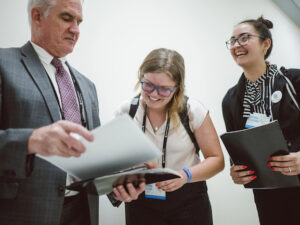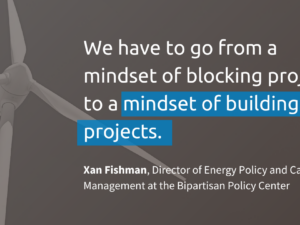
The BIG WIRES Act would increase energy transmission between regions, saving as much as $2.5 billion while reducing emissions
Big impacts from BIG WIRES Act and IRA home rebates
By Dana Nuccitelli, CCL Research Coordinator
In CCL’s virtual lobbying last November, our primary ask was for members of Congress to cosponsor the BIG WIRES Act. Many Congressional offices responded by asking detailed questions about the bill. Questions like, ‘How much will it impact utility costs?’; ‘How much will it reduce climate pollution?’; and ‘How will it impact our specific region?’.
It was difficult to provide specific answers to these questions at the time, because nobody had yet analyzed the BIG WIRES Act and its effects. That changed a little over a month ago, when researchers at MIT published a report doing exactly that! Around the same time, a group of scientists from Vanderbilt University published a study about the importance of the Inflation Reduction Act’s home electrification and efficiency incentives, and we got an update about the status of the bill’s upfront rebates for low- and middle-income households.
I recently gave a Citizens’ Climate University training to educate CCL volunteers about these important updates. Watch the full training here or read on for a recap:
The BIG WIRES Act is a win-win-win
The BIG WIRES Act’s premise is pretty simple: the bill would require that each region of the country increase the amount of electricity it’s able to exchange with neighboring regions. This wouldn’t cost the federal government or taxpayers any money – electrical utilities and transmission developers would pay for these upgrades. But while they would bear these costs, utilities would also benefit from being able to import more cheap clean electricity from their neighbors, and as a result would need to build fewer new local power plants and other energy infrastructure.
The MIT scientists tallied up all of the resulting costs and savings, and found that overall, the BIG WIRES Act would save the country between $330 million and $2.5 billion per year. The bill’s impacts vary by region. The western half of the country already has a lot of transmission connections, and so complying with BIG WIRES won’t require very much change. Areas like Florida, the Midwest, and Carolinas would save over a billion dollars by being able to import more cheap clean electricity from their neighbors. And the Mid-Atlantic, Central, and Northeast parts of the country would build and sell more solar and wind power to their neighbors, benefitting from the associated revenue and job creation.
The report estimated that connecting all of that new solar and wind power to the grid would reduce American climate pollution by about 73 million tons of carbon dioxide per year, or about 1–2% of our total emissions. That’s not bad for a single bill that we’re hoping will be part of a big comprehensive permitting reform package. And the authors estimated that had Winter Storm Elliott in 2022 happened in a post-BIG WIRES world, the eastern states would have experienced 58% fewer power blackouts.
In short, the BIG WIRES Act would reduce climate and air pollution, energy costs, and power outages. It’s a win-win-win!
Home electrification and efficiency updates
The Vanderbilt study looked at the Inflation Reduction Act and bipartisan infrastructure bill’s investments in household incentives. For example, the Inflation Reduction Act offers tax credits for home heat pump space and water heaters and for electric vehicles, among other incentives. The study found that heat pumps could account for 23% of all of these bills’ potential emissions reductions, plus another 17% from electric cars. So, these household electrification actions are very important.
And the latest update from the Department of Energy tells us that four states – California, Hawaii, New Mexico, and New York – are in the final stages of setting up programs for low- and middle-income households to receive upfront rebates for home electrification and efficiency measures including installing heat pumps. The rebates may be available in these states within a few months, and most other states are also making progress in setting up their programs. The rebates will be rolled out in more states later this year and into 2025.
What’s next?
Key congressional offices continue to negotiate a bipartisan comprehensive permitting reform bill that is likely to include the BIG WIRES Act. CCL’s conservative conference is coming up on March 19–20, and will include a primary lobbying ask about permitting reform opportunities, focusing heavily on the BIG WIRES Act. And as the upfront home electrification and efficiency rebates become available in individual states, CCL chapters can stage events to inform their local communities about these critical incentives.





